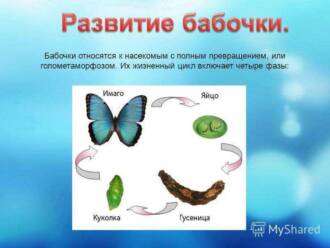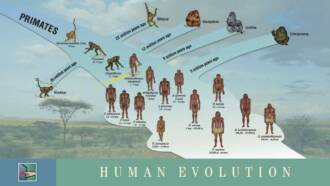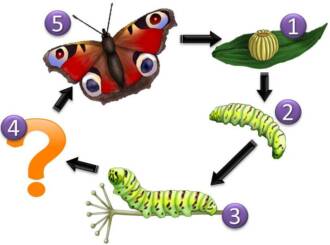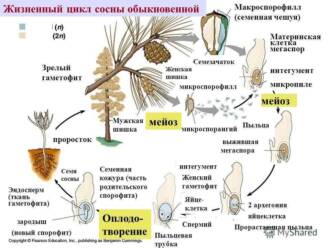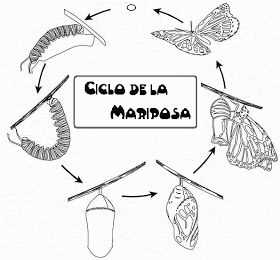
Butterflies are one of the most beautiful creatures of nature. Their elegant wings, bright colors and ease of flight attract the attention and admiration of people around the world. But few people think about how much effort and time it takes for these beautiful insects to turn from caterpillars into butterflies.
The life cycle of a butterfly is a real miracle of nature. It has four phases: egg, caterpillar, chrysalis, and finally the butterfly. Each of these phases has its own characteristics and lasts a certain time. But the most amazing stage is the transformation of the caterpillar into a chrysalis.
At this moment, the caterpillar is fixed on a branch or leaf and begins the process of metamorphosis. It forms a thin shell, from which a cocoon gradually grows. Incredible changes take place inside the cocoon: the caterpillar turns into a completely new creature - a chrysalis. Inside the pupa, new organs, wings, and legs grow, while old organs disappear. After a few weeks or months, depending on the type of butterfly, the pupa bursts, and a beautiful one flies out of it, the color of which depends on the species and sex.
The role of butterflies in the ecosystem
Butterflies are important participants in an ecosystem. They perform a number of functions that contribute to the balance and diversity of living organisms.
Plant pollinators
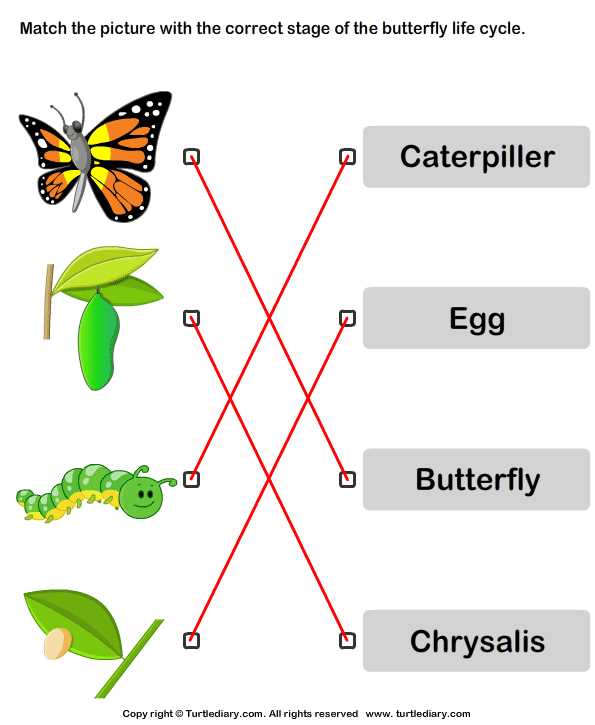
Butterflies are one of the main pollinators of plants. The pollen that sticks to their bodies while visiting flowers is transferred to other flowers, aiding their pollination. This allows plants to reproduce and maintain their populations. Without butterflies, many plant species would be extinct.
The role of the food chain
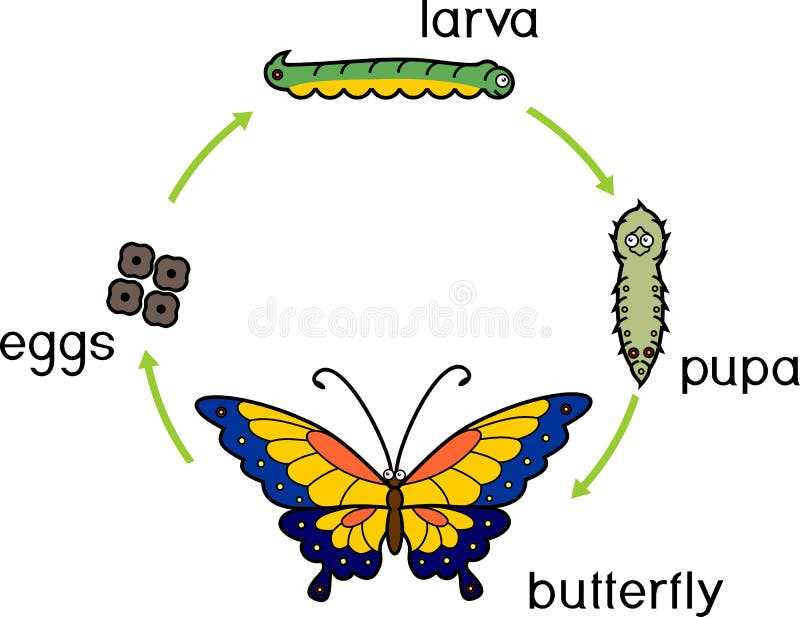
Butterflies are a source of food for many animals. Their caterpillars serve as food for birds, lizards, frogs and other predators. Adult butterflies are also a food source for birds and other insectivorous animals. Thus, butterflies occupy an important place in the food chain and contribute to biodiversity.
Environmental indicators
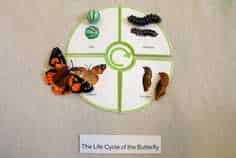
Butterflies can be used as indicators of the state of the environment. They respond to changes in the quality of air, water and soil, so their presence or absence may indicate the state of the ecosystem. Monitoring of butterfly populations can help in assessing the impact of human activities on the environment and taking appropriate measures for its conservation.
From egg to pigeon: the first stage of the life cycle
The life cycle of butterflies begins with an egg. Butterfly eggs are as varied as the butterflies themselves. They can be of different sizes, shapes and colors. Depending on the type of butterfly, eggs can be single or collected in groups.
Butterfly eggs are usually very small and fragile. They can be attached to plant leaves, twigs, or other surfaces. Some species of butterflies choose special places to lay their eggs in order to provide better conditions for the survival of future caterpillars.
After the butterfly eggs are laid, they begin to develop. Inside the egg is an embryo, which gradually turns into a caterpillar. This process takes a different time depending on the type of butterfly and environmental conditions.
When the embryo is fully developed, the egg hatches into a small caterpillar, the first stage in the butterfly's life cycle. Caterpillars are usually distinguished from adult butterflies by their appearance and feeding habits. They actively eat leaves and other plant material to gain strength and grow. Caterpillars often have a variety of colors and patterns to help them hide from predators and survive in their environment.
The transformation of a caterpillar into a chrysalis: the second stage of the life cycle
Once the caterpillar reaches maturity and has accumulated enough nutrients, it prepares for the next stage of its life cycle - becoming a pupa.
Before turning into a chrysalis, the caterpillar begins to look for a suitable place for this. She can choose various hiding places, such as branches, leaves, or even the ground. The caterpillar attaches its rear body to the chosen surface and begins to secrete special threads from which a suspension is formed, called the veil.
When the veil is fully formed, the caterpillar begins to turn into a chrysalis. She attaches her front body to the veil using her legs and back. The caterpillar then begins to slowly curl up inside its body, creating a cocoon around itself. Amazing changes take place inside the cocoon: the body of the caterpillar decomposes and turns into a liquid, from which new organs and tissues of the butterfly are then formed.
The process of turning a caterpillar into a chrysalis takes several hours or even days, depending on the type of butterfly. During this time, the doll is at rest, does not move or eat. She is completely wrapped in her cocoon and protected from the outside environment.
From chrysalis to butterfly: the third stage of the life cycle
The third stage of the butterfly's life cycle begins when it hatches from the chrysalis. When the butterfly emerges from its protective cover, it is still very weak and cannot fly. Within a few hours, she must go through the process of flight - disperse her wings and learn how to control them.
An important role in this stage is played by the drying of the wings. When a butterfly has just hatched, its wings are wet and fold along its body. It must remain motionless so that the wings can dry out and return to their normal shape. During this time, the butterfly also sucks the liquid from the chrysalis into its wings so that they become strong and ready to fly.
After drying the wings, the butterfly is ready for its first flight. She begins to slowly flap her wings and try to fly short distances. Each time she becomes more confident and more skillful in flight. Due to their lightness and beautiful variety of colors, butterflies attract the attention and admiration of people.
Butterfly distribution: the importance of their migrations
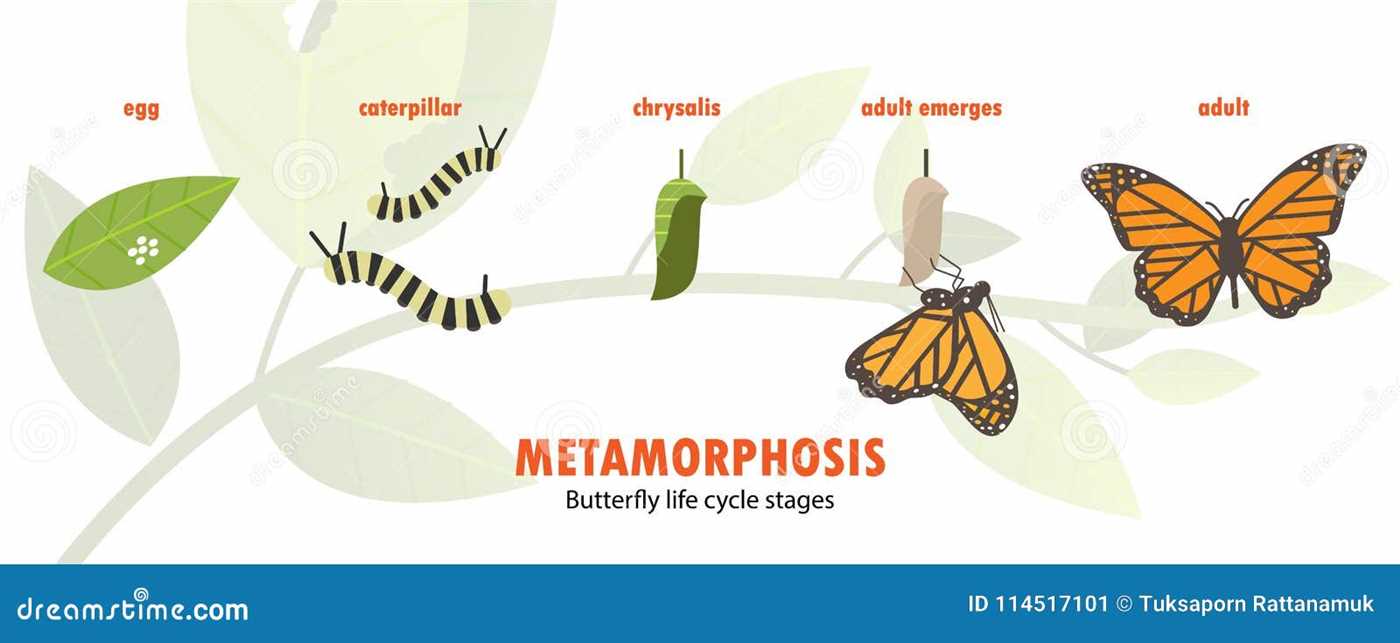
Butterflies are one of the most beautiful and amazing creatures of nature. Their bright wings and graceful movement attract the attention of people from all over the world. However, few people think that butterflies also play an important role in the ecosystem and perform important functions.
Butterfly migrations are of great importance for their distribution. Through migration, butterflies can inhabit new territories and provide a variety of species in different regions. They move long distances, overcoming obstacles such as mountains, rivers and oceans. This allows them to reach new habitats and find food in different climates.
Butterfly migrations also contribute to the conservation of biodiversity. By moving between different places, butterflies help spread pollen and pollinate plants. This is an important factor for the conservation of plant species and maintaining the ecological balance. Without the participation of butterflies in the distribution of pollen, many plants would not be able to reproduce and survive.
In addition, butterfly migrations are important for exploration and study of nature. Scientists use data on the movements of butterflies to understand their migratory routes, habitat preferences, and environmental influences on their behaviour. This allows us to better understand natural processes and take action to conserve and protect biodiversity.
In general, the distribution of butterflies and their migrations play an important role in nature. They provide species diversity, maintain ecological balance, and help us better understand the nature around us. Therefore, caring for butterflies and their habitats is an important step in preserving the natural resources and biodiversity of our planet.
Threats facing butterflies
1. Destruction of natural habitat
One of the biggest threats facing butterflies is the destruction of their natural habitat. The destruction of forest areas, the cutting of trees and the disappearance of flower fields lead to the loss of places where butterflies can find food and a place to breed. Most butterflies interact with certain types of plants, and if these plants disappear, then the butterflies that depend on them will also die.
2. Climate change
Climate change also poses a major threat to butterflies. Global warming and temperature fluctuations affect their life cycles. Some types of butterflies, such as tropical butterflies, are sensitive to changes in temperature and humidity. If climatic conditions exceed their tolerance limits, then this may lead to the extinction of these species.
3. Environmental pollution
Environmental pollution also has a negative effect on butterflies. The use of pesticides, herbicides, and other chemicals in agriculture and horticulture can poison butterflies and destroy their food sources. Exposure to polluted water and air can also adversely affect their development and survival.
4. Illegal collection and trade
The illegal collection and trade of butterflies is another threat to their survival. Some types of butterflies are collectible and can be sold on the black market. This leads to their degradation and a decrease in their numbers in the wild. Therefore, it is important to take measures to control and prevent the illegal trade in butterflies.
5. Impact of invasive species
Exposure to invasive species can also pose a threat to butterflies. Some plant species that have been introduced from other regions may crowd out native plant species that serve as a food source for butterflies. This can lead to a decrease in the number of butterflies, and in some cases to their complete disappearance.
Butterfly Conservation and Protection: How Everyone Can Help
Butterflies, these delicate creatures with wings, attract attention with their beauty and grace. However, they face many threats that could lead to their extinction. Fortunately, each of us can contribute to the conservation and protection of these amazing insects.
1. Creating an enabling environment

One way to help butterflies is to create a favorable environment for them to live. This can be done by planting plants that attract butterflies and provide them with food. Some of these plants include honey plants such as bluegrass, lavender, and calendula. You should also avoid the use of pesticides and chemical fertilizers, which can harm butterflies and their eggs.
2. Support for habitats
Butterflies need a variety of habitats to reproduce and survive. They can use a variety of plant types, from flower beds to wild grass and native forests. Support for these habitats can be achieved through the conservation of natural areas, the planting of wild plants and the creation of special butterfly gardens. Such gardens usually contain plants that serve as a food source for butterflies and their eggs, as well as provide shelter and places to rest.
3. Education and awareness
Education and awareness about butterflies and their role in the ecosystem are also important aspects of the conservation and protection of these insects. Spreading knowledge about the importance of butterflies and their vulnerability can help raise public awareness and support for their protection. This can be achieved through various forms of education such as lectures, articles, exhibitions and tours.
Overall, each of us can do our part to conserve and protect butterflies. Creating a favorable environment, maintaining habitats, and raising awareness are just some of the ways we can help these beautiful creatures survive and thrive.

